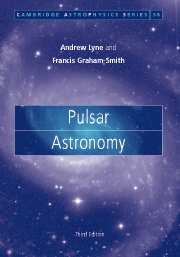Pulsar Astronomy (3rd Edition, February 2006)
Contents
Preface; 1. The discovery of pulsars; 2. Neutron stars; 3. Searches and surveys; 4. The distances of the pulsars; 5. Pulsar timing; 6. Timing and astrometry of binary pulsars; 7. Timing irregularities; 8. The Galactic population of pulsars; 9. The Crab and Vela pulsars; 10. Other young pulsars; 11. Millisecond and binary pulsars; 12. X-ray pulsars and magnetars; 13. Gamma-ray pulsars; 14. Supernovae and their remnants; 15. The evolution of pulsars; 16. Integrated radio pulse profiles; 17. Individual pulses; 18. Location of emitting regions; 19. Radiation processes; 20. The emission mechanisms; 21. Interstellar scintillation and scattering; 22. The interstellar magnetic field; 23. Achievements and prospects; The Pulsar Catalogue; Bibliography; Index.
Review
' covers a broad range of topics in a concise way, and it is particularly strong in its discussions of pulsar emission phenomenology, pulsars as probes of the interstellar medium and timing irregularities in young pulsars. With its breadth and clear presentation, the new edition will continue to be a valuable introduction for graduate students and others ' Physics Today
Ordering
Order from Cambridge University Press
Contact Us
For further information, please contact either Andrew Lyne or Francis Graham-Smith by email: Andrew.Lyne at manchester dot ac dot uk or fgs at jb dot man dot ac dot uk.

